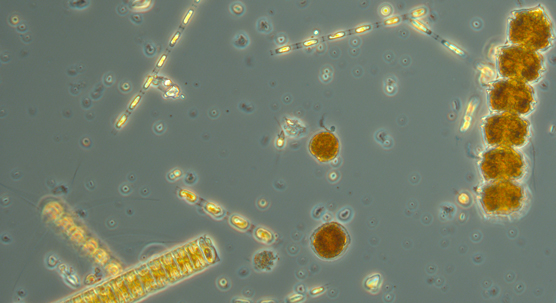Spring bloom peak in Gulf of Finland, Baltic Proper
Published : 19 May 2021, 02:46
The spring Phytoplankton bloom was already at its peak in the Gulf of Finland in late April, according to the annual spring monitoring cruise of R/V Aranda, said the Finnish Environment Institute (SYKE) in a press release on Tuesday.
The SYKE performed annual spring monitoring cruise with R/V Aranda from 20 to 30 April. The cruise covered the Northern Baltic Proper, Gulf of Finland, Åland Sea, Archipelago Sea and Bothnian Sea.
During the cruise phytoplankton biomass, nutrients, temperature, oxygen, salinity and pH in the water are measured to study the state of the Baltic Sea.
“With these measurements we can understand the long-term changes in the Baltic Sea caused by eutrophication and climate change. For example, warming is causing noticeable changes in the environment, with less ice during the winter and surface water warming up earlier in the spring. What effect this has on the phytoplankton spring blooms is still uncertain, but there is clear indication that the blooms start earlier and the algal community change,” said Senior Research Scientist and cruise leader Kristian Spilling.
In late April the spring bloom in the Gulf of Finland was quite heterogeneously distributed. The highest concentration of phytoplankton biomass in the water was found off Helsinki, with less biomass in eastern part of the Gulf of Finland and lowest at the westernmost sampling points off Hanko.
“This big difference in phytoplankton biomass within a relatively small area is driven by hydrodynamics, that is water movement and mixing,” Kristian Spilling added.
In the Baltic Proper the peak of the spring bloom was also close. In the Åland Sea and the Bothnian Sea there was still relatively much nutrients in the surface water and the spring bloom was in the initiation phase. Typically, the peak of the spring bloom is expected around mid-May in the Åland Sea and the Bothnian Sea.
Spring is the time with the densest phytoplankton blooms throughout the year. Phytoplankton or algal bloom is a term used for periods when the biomass of pelagic primary producers is extremely high.
“There are several reasons for this. Firstly, spring bloom is dominated by diatoms and dinoflagellates, which do not form easily visible and unpleasant surface accumulations like cyanobacteria do during summer. Secondly, spring bloom does not cause health risks like cyanobacterial blooms do. Thirdly, the water is still very cold in the springtime and people are not yet spending much time at the sea and along the coastline, so they do not pay so much attention to brownish color of the water. However, fishermen may notice slime in fishing nets during spring bloom,” said Senior Research Scientist Sirpa Lehtinen, who is coordinating the national marine phytoplankton monitoring in Finland.


